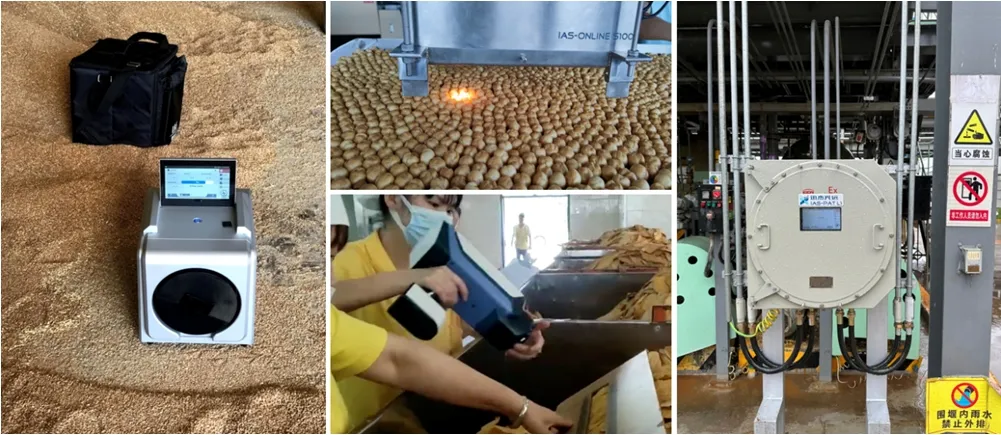Revolutionizing Grain Storage: How NIR Technology Safeguards Quality and Profit
Jun 23, 2025
Post-harvest grain losses due to spoilage, contamination, and quality mismatches remain a global agricultural challenge. Near-Infrared Spectroscopy (NIRS) is emerging as a transformative tool, enabling rapid, non-destructive quality assessment directly at storage sites—empowering farmers and agribusinesses to act decisively before losses escalate.
Industry Pain Points
Hidden Risks in Storage
Moisture hotspots (>14%) trigger mold growth, destroying entire batches.
Undetected protein variability (e.g., soybeans ranging from 32% to 39%) leads to pricing disputes.
Delayed lab results (24–72 hours) allow contamination to spread unchecked.
Economic Consequences
Global annual losses: $15B+ from spoilage and quality downgrades (FAO 2024).
Premium price gaps: High-protein grains often sell for 20–30% more but go unidentified.
NIR’s Transformative Role
- Real-Time Decision-Making
Moisture Mapping:
Detect moisture gradients (8–18% range) across silos within seconds.
Pinpoint hotspots for targeted aeration, reducing energy costs by 15–20%.
Contaminant Screening:
Identify fungal biomarkers (e.g., ergosterol) at critical control points.
Flag batches exceeding safety thresholds (e.g., aflatoxin B1 <20 ppb) for lab confirmation.
- Value Preservation Through Precision
Protein-Based Grading:
Classify grains into quality tiers (e.g., wheat protein 10–16%) during intake.
Optimize storage zones to maximize market value and comply with export standards.
- Sustainability Gains
Waste Reduction:
Early spoilage detection cuts losses by 30–50% in high-humidity regions.
Minimize over-drying (saves 10–15% energy) through precise moisture control.
Chemical-Free Compliance:
Replace solvent-based lab tests (e.g., hexane extraction for oil content) with eco-friendly analysis.
Why NIR Outperforms Traditional Methods
|
Parameter |
Traditional Lab |
NIR Technology |
|
Time per test |
4–24 hours |
20–30 seconds |
|
Cost per sample |
$8–15 (reagents + labor) |
$0.50–1.50 (no consumables) |
|
Scalability |
Limited to centralized labs |
Field-to-silo deployment |
|
Environmental Impact |
Chemical waste generation |
Zero hazardous byproducts |

https://www.ias-glb.com/shop/ias-5100
AI-Driven Predictive Analytics:
Blockchain Integration:
Immutable quality records from farm to buyer enhance trust in global trade.
Democratized Access:
Compact, affordable NIR devices empower smallholder farmers to compete in premium markets.
